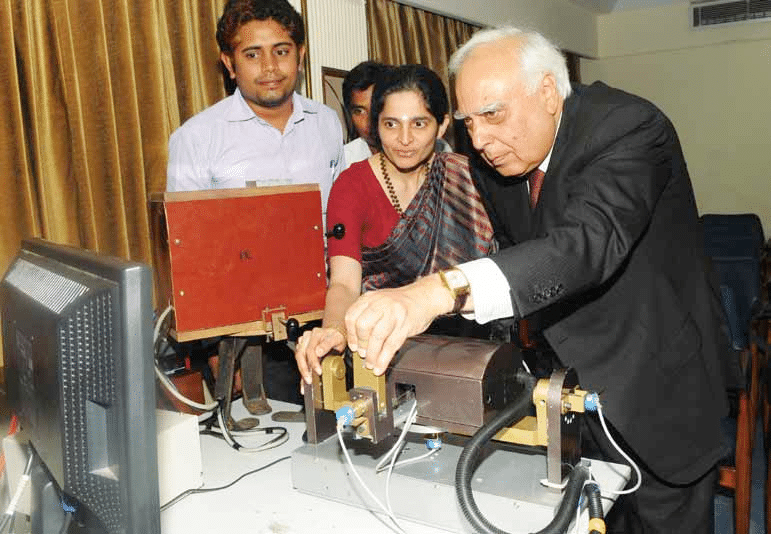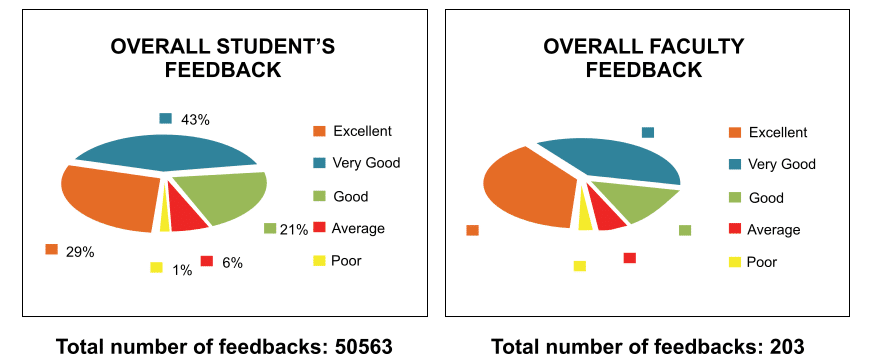

Good lab facilities and updated lab experiments are critical for any engineering college. Physical distances and the lack of resources often make it difficult to perform experiments, especially when they involve sophisticated instruments. Also, good teachers are always a scarce resource. The Virtual Labs project addresses this issue of lack of good lab facilities, as well as trained teachers, by making remote experimentation possible. With the present day Internet and computer technologies, these limitations no longer hamper students and researchers in enhancing their skills and knowledge. Also, in a country like ours, costly instruments and equipment need to be shared with fellow researchers to the extent possible. Yet another objective is to arouse the curiosity of the students and permit them to learn at their own pace. This facilitates the absorption of basic and advanced concepts through remote experimentation. Internet-based experimentation further permits use of resources – knowledge, software, and data available on the web, apart from encouraging skillful experiments being simultaneously performed at points separated in space. In the Virtual Labs project, web-enabled experiments have been designed for remote operation and viewing. The pilot phase of the Virtual Labs project was started in April 2009. During this phase, approximately twenty labs were developed as proof of concept. The main phase began in April 2010. Virtual Labs has been operational since February 23, 2012, when it was ‘Dedicated to the Nation’ by Kapil Sibal, the then Minister of Human Resource Development. Over 50,000 students (in approximately 150 colleges) have used the Virtual Labs and have provided user-feedback.
Virtual labs provide:
- Access to quality labs to those engineering colleges that lack these lab facilities
- Access to quality labs as a complementary facility to those colleges that already have labs
- A complete Learning Management System around these labs
- Teacher-training and skill-set augmentation through workshops and on-site training
Objectives
- To provide remote-access to labs in various disciplines of Science and Engineering
- To cater to students at the UG level, PG level as well as to research scholars
- To enable the students to learn at their own pace, and to arouse their curiosity
- To provide a complete Learning Management System that includes web-resources, video-lectures, animated demonstrations and self evaluation
Salient features
The salient features of virtual labs are:
• Virtual Labs provide to the students the result of an experiment by one of the following methods, or possibly, a combination of these (see Fig 1):
(i) Modeling the physical phenomenon by a set of equations and carrying out simulations to yield the result of the particular experiment. This can, at-best, provide an approximate version of the ‘real world’ experiment
(ii) Providing a corresponding measurement data for the virtual lab experiment based previously carried out measurements on an actual system. This will be closer to the ‘real world’ experiment
(iii) Remotely triggering an experiment in an actual lab and providing the student the result of the experiment through the computer interface. This would entail carrying out the actual lab experiment remotely
• Virtual labs can be made more effective and realistic by providing additional inputs to the students like accompanying audio and video streaming of an actual lab experiment and equipment
• For the ‘touch and feel’ part, the students can possibly visit an actual laboratory for a short duratio
In Simulation-Based Virtual Labs, the experiments are modeled using mathematical equations. The simulations are carried out remotely at a high-end server, and the results are communicated to the student over the Internet. These labs are scalable and can cater to a large number of simultaneous users.
Using the Remote Triggered Virtual Labs, the actual experiments are triggered remotely. The output of the experiment (being conducted remotely) is communicated back to the student over the Internet. This class of virtual labs gives the student the output of real-time experiments. Typically, time-slots are booked before conducting such experiments.
All Virtual Labs can be accessed through a common website: www.vlab. co.in. At the user end, a PC and broadband connectivity enables the user to access virtual labs.
Beneficiaries of the project The intended beneficiaries of the projects are:
- All students and faculty members of Science and Engineering colleges who do not have access to good lab facilities
- High school students whose inquisitiveness will be triggered, possibly motivating them to take up higher studies
- Researchers in different institutes who can collaborate/share equipment and resources
- Different engineering colleges that can benefit from the content and related teaching resources
The project has fulfilled the targeted beneficiaries (and even gone beyond). An ecosystem has evolved around virtual labs, where the community has become involved in evolving and benefitting from the project.
Broad areas of virtual labs
Virtual labs have been developed in the following broad areas:
- Electronics and Communication Engineering
- Computer Science and Engineering
- Electrical Engineering
- Mechanical Engineering
- Chemical Engineering
- Biotechnology and Biomedical Engineering
- Civil Engineering
- Physical Sciences
- Chemical Sciences
 Value-add provided by the project
Value-add provided by the project
Virtual labs provide immense benefit to those engineering colleges that do not have good lab facilities. The virtual labs project can also be used in a complementary fashion to the existing physical labs. The value-add provided by virtual labs is depicted in Fig 2.
Virtual labs have provided both the students and the teachers the access to quality labs in a wide range of topics, spanning different branches of science and engineering. Over 100 virtual labs have been developed. The importance and effectiveness of these labs can be estimated from the user feedback (see Fig 3). The labs are also being used outside the labs hours, and also on weekend, as depicted by Figs 4 and 5.























